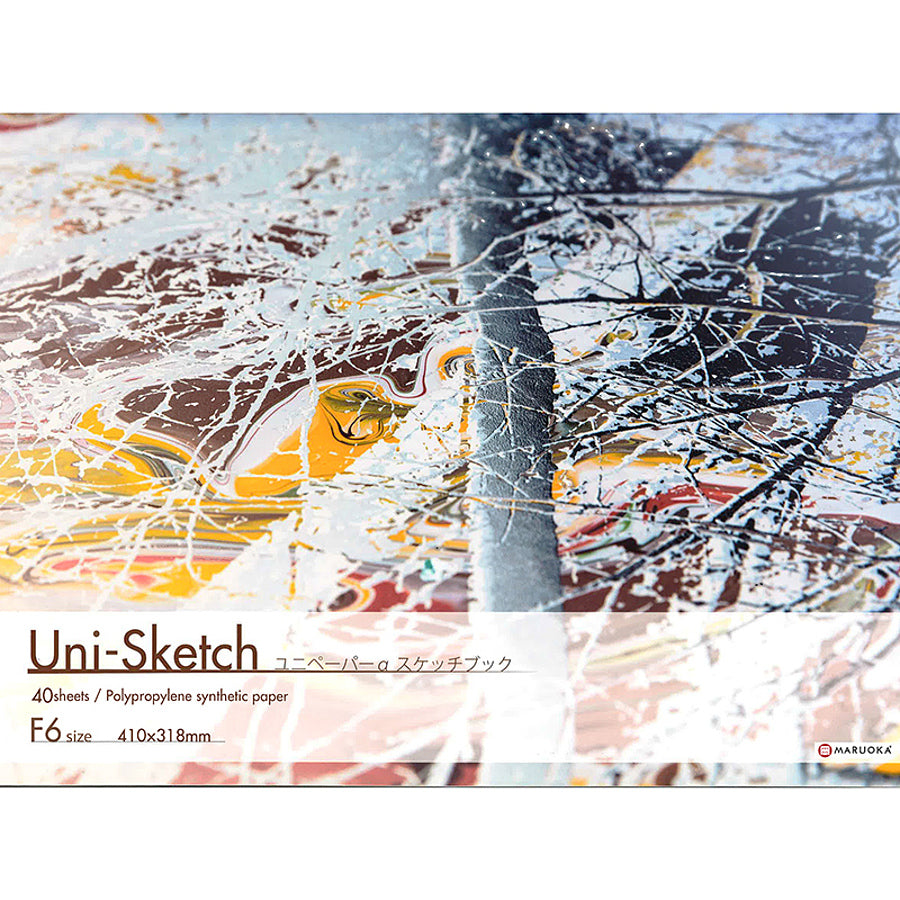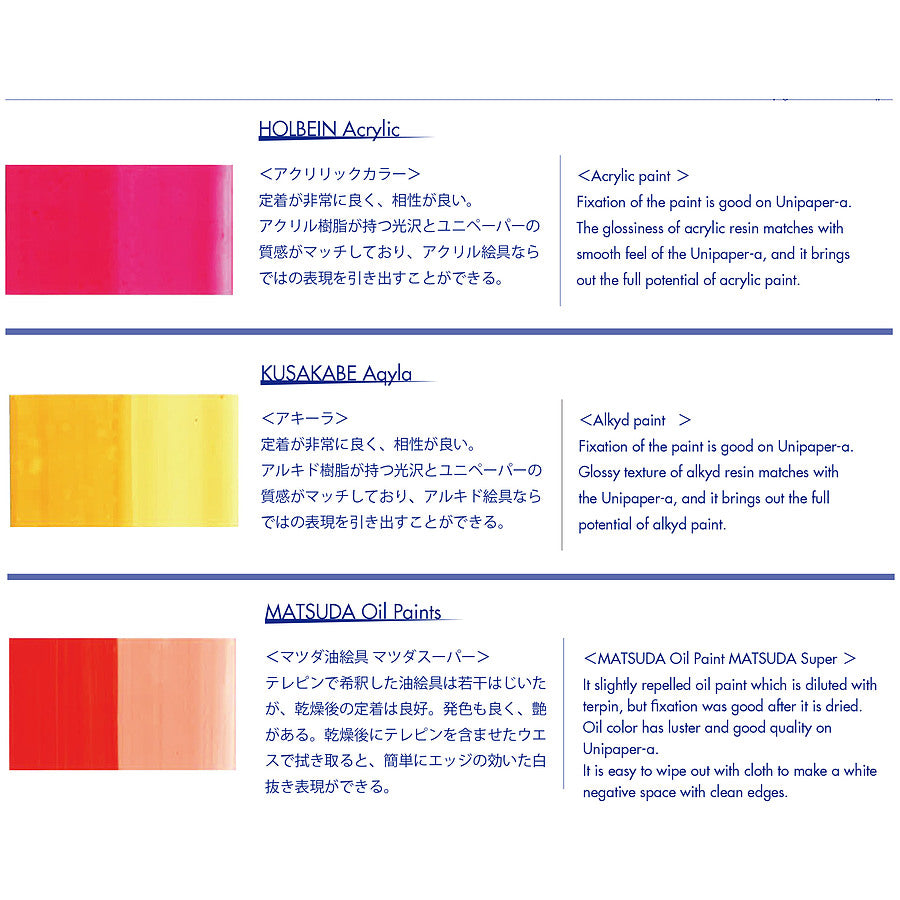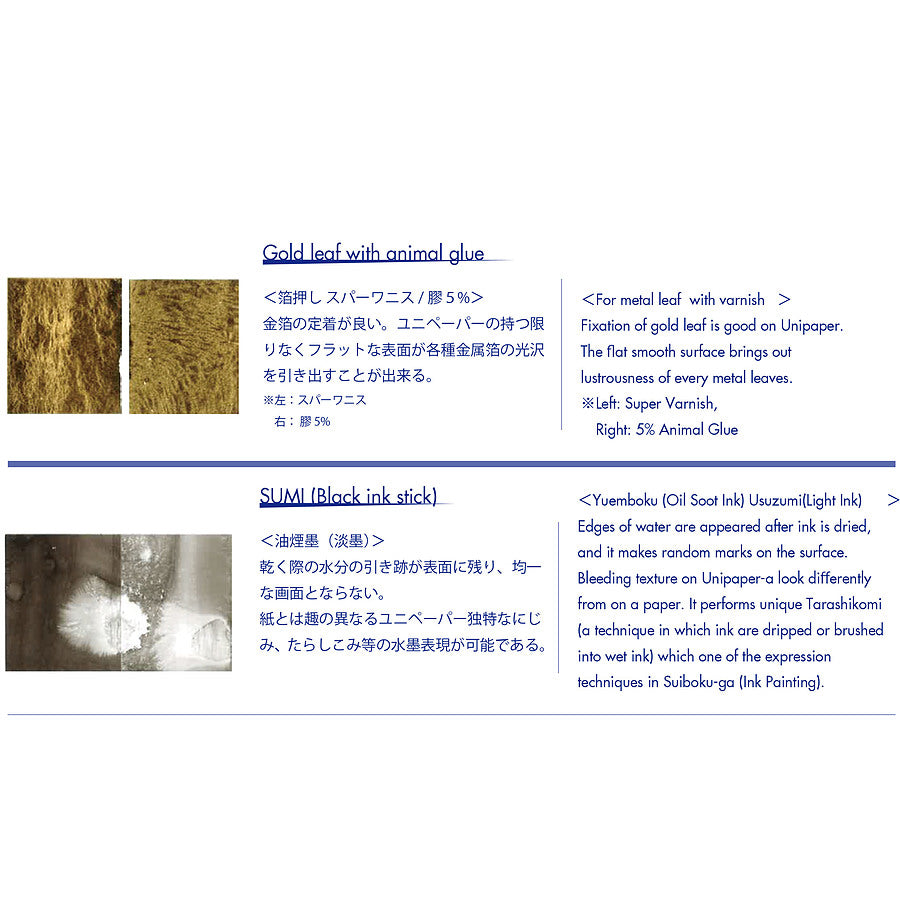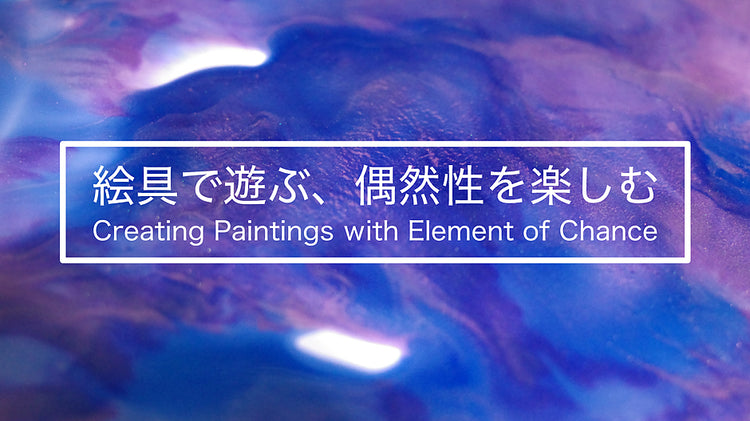YUPO paper α
Brand:
マルオカ工業|MARUOKA
Material:
YUPO
| amount/size | price | |
|---|---|---|
| A4 10枚(297×210mm) | JPY 1,320 tax in |
quantity
|
| F6 sketchbook 40 sheets(409×318mm) | JPY 6,600 tax in |
quantity
|
| 1m×10m Roll | JPY 9,350 tax in |
quantity
|
Couldn't load pickup availability
Free shipping to Japan for orders of JPY 20,000 excluding tax or more.
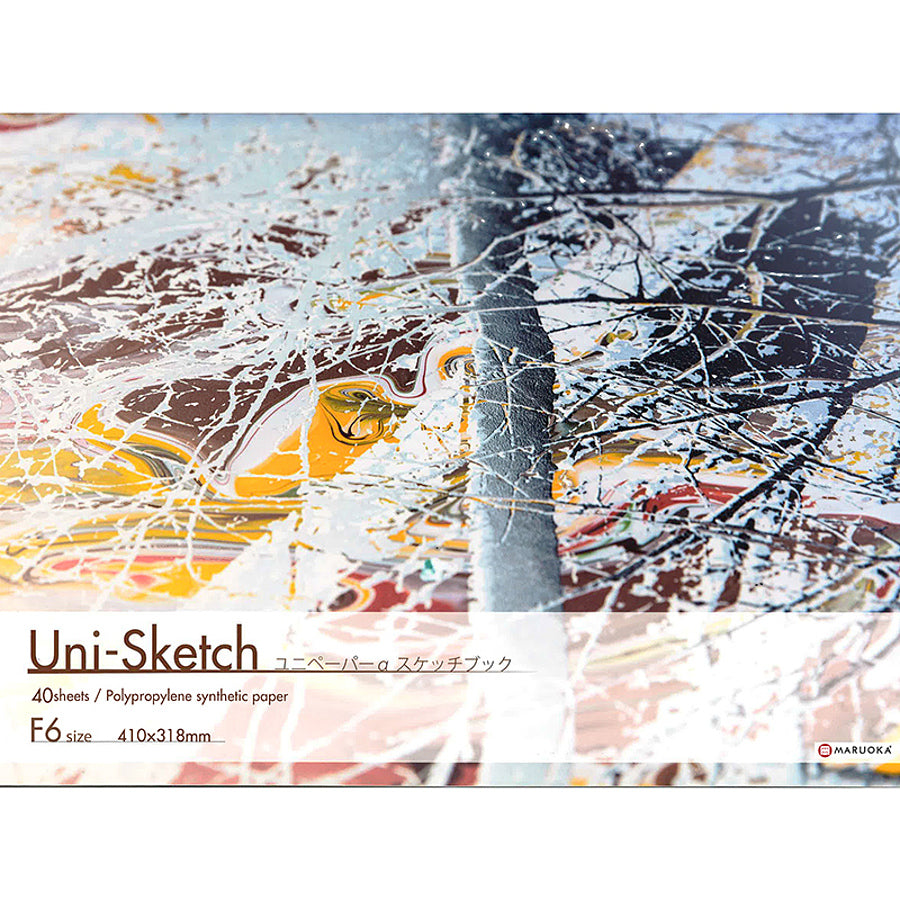

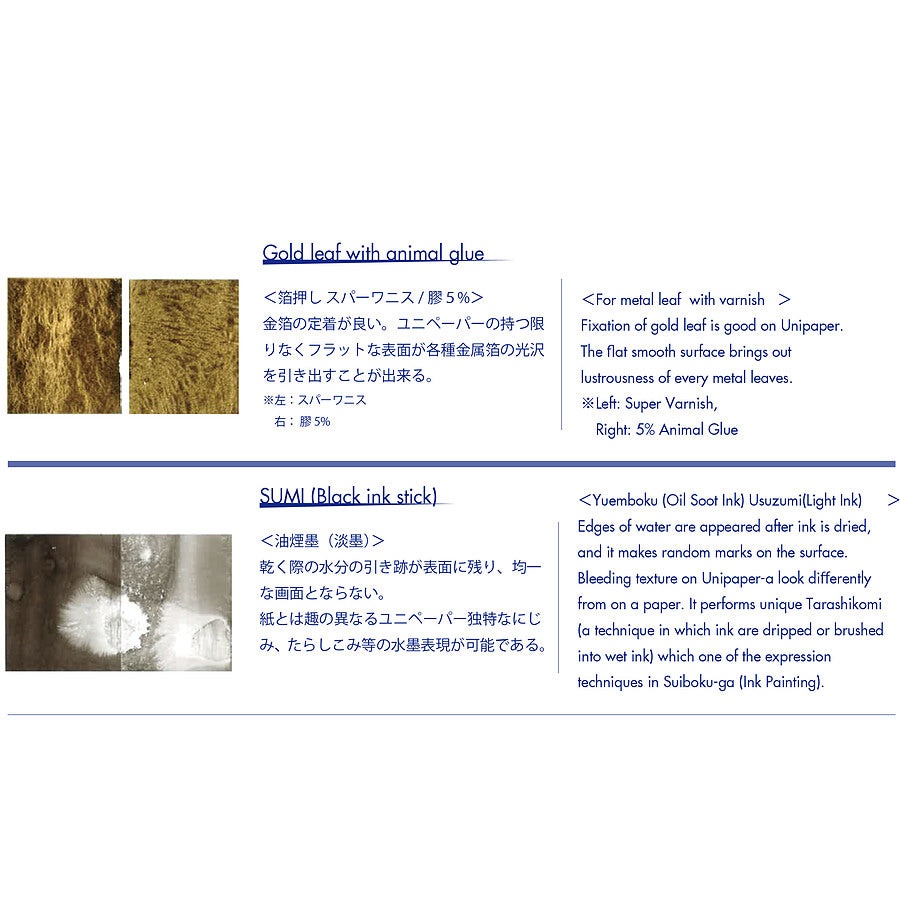
Description
YUPO has high preservability and is less liable to tear. The surface is smooth and resistant to water. The substrate is made from polypropylene which is resource and eco-friendly. (made from synthetic paper)
YUPO is highly compatible with resin paints such as acrylic, and it is ideal for painting by using pencils, Iwa-enogu (mineral pigments), or even metal leaf with animal glue. Oil paint can be easily painted on the paper by mixing with Gesso Ground. (For more details, please refer the attached explanation of sample results)
For maintaining artworks on YUPO, applying fixative is highly recommended. Both sides are paintable as there is no difference between the front and the back. Moreover, the ink or colors does not affect the other side.
◇Compatibility with Art Materials
<Acrylic paint>
Fixation of the paint is good on YUPO paper α. The glossiness of acrylic resin matches with the smooth texture of YUPO paper α, and it brings out the full potential of acrylic paints.
<Alkyd paint>
Fixation of the paint is good on YUPO paper α. The glossiness of acrylic resin matches with the smooth texture of YUPO paper α, and it brings out the full potential of acrylic paints.
<Oil Paint>
Oil paint diluted with turpentine is slightly repulsive, but stayed on the paper well after drying. The color shows luster and good quality on YUPO paper α. Wiping off the paint after it dries with a brush moistened with turpentine makes it easier to remove the white edge of the paint.
<For metal leaf with varnish / Glue 5% >
Fixation of metal leaf is good on YUPO paper α. The infinitely smooth surface brings out the lustrousness of every metal leaf.
<Yu-en boku Usuzumi (Light Oil Soot Ink)>
Traces of water are appeared after ink dries, and it makes random marks on the surface. The color bleeding texture appears on YUPO paper α looks quite different from other drawing papers. It creates an unique Tarashikomi (a technique in which ink are dripped or brushed into water) effect, which is commonly used in Suiboku-ga (Ink Painting).
YUPO is highly compatible with resin paints such as acrylic, and it is ideal for painting by using pencils, Iwa-enogu (mineral pigments), or even metal leaf with animal glue. Oil paint can be easily painted on the paper by mixing with Gesso Ground. (For more details, please refer the attached explanation of sample results)
For maintaining artworks on YUPO, applying fixative is highly recommended. Both sides are paintable as there is no difference between the front and the back. Moreover, the ink or colors does not affect the other side.
◇Compatibility with Art Materials
<Acrylic paint>
Fixation of the paint is good on YUPO paper α. The glossiness of acrylic resin matches with the smooth texture of YUPO paper α, and it brings out the full potential of acrylic paints.
<Alkyd paint>
Fixation of the paint is good on YUPO paper α. The glossiness of acrylic resin matches with the smooth texture of YUPO paper α, and it brings out the full potential of acrylic paints.
<Oil Paint>
Oil paint diluted with turpentine is slightly repulsive, but stayed on the paper well after drying. The color shows luster and good quality on YUPO paper α. Wiping off the paint after it dries with a brush moistened with turpentine makes it easier to remove the white edge of the paint.
<For metal leaf with varnish / Glue 5% >
Fixation of metal leaf is good on YUPO paper α. The infinitely smooth surface brings out the lustrousness of every metal leaf.
<Yu-en boku Usuzumi (Light Oil Soot Ink)>
Traces of water are appeared after ink dries, and it makes random marks on the surface. The color bleeding texture appears on YUPO paper α looks quite different from other drawing papers. It creates an unique Tarashikomi (a technique in which ink are dripped or brushed into water) effect, which is commonly used in Suiboku-ga (Ink Painting).

